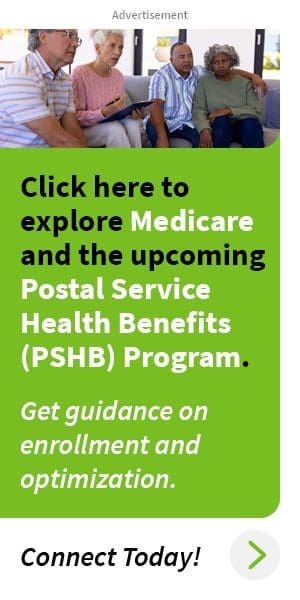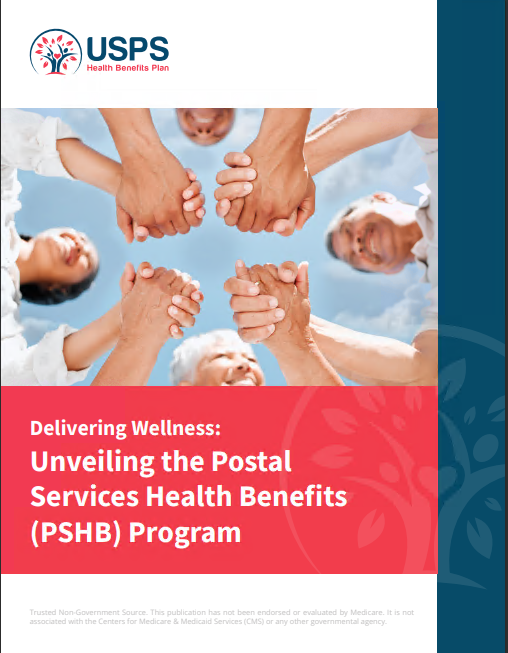Key Takeaways
- Dependent coverage under the Postal Service Health Benefits (PSHB) Program offers significant options, with updates taking effect in 2025.
- Understanding eligibility, enrollment periods, and coverage specifics will help postal employees and their families make informed health care decisions.
The Essential Guide to Dependent Coverage for Postal Service Health Benefits in 2025
As the U.S. Postal Service Health Benefits (PSHB) Program undergoes significant changes in 2025, postal employees and their families need to understand how these updates will impact dependent coverage. This guide provides essential information on eligibility, enrollment periods, and the nuances of dependent coverage, ensuring that postal workers can navigate the complexities of their health benefits with confidence.
What is Dependent Coverage in the PSHB Program?
Dependent coverage refers to health insurance provided to the family members of postal employees, such as spouses, children, and in some cases, other dependents like grandchildren or parents. Under the PSHB Program, dependent coverage allows these family members to access health benefits, often at reduced costs compared to securing individual health insurance policies.
Eligibility Criteria for Dependent Coverage
Understanding who qualifies as a dependent under the PSHB Program is crucial for ensuring that all eligible family members receive coverage. For the 2025 updates, the following categories of dependents are typically eligible:
-
Spouses: Legally married spouses of postal employees are eligible for coverage. This includes both same-sex and opposite-sex marriages.
-
Children: Dependent children, including biological, adopted, and stepchildren, are eligible for coverage until they reach the age of 26. This aligns with the Affordable Care Act (ACA) guidelines.
-
Disabled Children: Dependent children over the age of 26 who are physically or mentally disabled may continue to receive coverage if the disability occurred before the age of 26 and they are incapable of self-support.
-
Other Dependents: In some cases, other family members like grandchildren or parents may qualify as dependents if they rely on the postal employee for more than 50% of their financial support. However, this is less common and subject to specific conditions.
Key Enrollment Periods for 2025
Enrollment periods are critical for ensuring that dependents are properly covered. Missing these periods can lead to a lack of coverage or penalties. Here are the key enrollment periods for the PSHB Program in 2025:
-
Open Season: The primary enrollment period, known as Open Season, typically occurs in the fall. During this time, postal employees can add or remove dependents, switch plans, or make other adjustments to their coverage. For 2025, Open Season is expected to occur from early November through mid-December.
-
Special Enrollment Periods (SEPs): Life events such as marriage, birth, adoption, or loss of other health insurance can trigger a Special Enrollment Period. This allows postal employees to adjust their dependent coverage outside of Open Season. The enrollment window typically lasts 60 days from the date of the qualifying event.
-
Initial Enrollment Period (IEP): Newly hired postal employees or those who become eligible for the PSHB Program due to a change in employment status have an Initial Enrollment Period. This period usually lasts for 60 days from the date of eligibility.
How to Enroll Dependents in the PSHB Program
The process of enrolling dependents in the PSHB Program is straightforward but requires attention to detail to ensure that all necessary documentation is provided. Here’s a step-by-step guide:
-
Gather Necessary Documentation: Before enrolling dependents, postal employees need to collect the required documents. This typically includes marriage certificates, birth certificates, adoption papers, or legal documentation proving the dependency of other family members.
-
Access the PSHB Enrollment Portal: Enrollment is usually done through an online portal provided by the U.S. Postal Service. Employees need to log in using their credentials.
-
Select the Appropriate Plan: Employees must choose the health plan that best suits their family’s needs. Each plan will have different levels of coverage and costs associated with it.
-
Add Dependents: Once a plan is selected, employees can add their dependents by providing the necessary information and uploading the required documents.
-
Review and Submit: Before finalizing enrollment, it’s important to review all the information for accuracy. After submission, the employee will receive confirmation, and the dependents will be enrolled in the chosen plan.
Understanding the Coverage Options for Dependents
The PSHB Program offers various coverage options for dependents, depending on the plan selected. These options typically include:
-
Medical Coverage: This covers a range of services such as doctor visits, hospital stays, and preventive care. Most plans under the PSHB Program comply with ACA standards, ensuring essential health benefits are provided.
-
Prescription Drug Coverage: Dependents will have access to prescription drug coverage, which can significantly reduce the cost of medications.
-
Dental and Vision Coverage: Some plans may offer dental and vision coverage for dependents, either included in the main plan or as an add-on option.
-
Mental Health and Substance Abuse Services: Coverage for mental health services and substance abuse treatment is often included, recognizing the importance of comprehensive care.
-
Specialty Care: Depending on the plan, dependents may also have access to specialty care services, including visits to specialists and advanced treatments for specific conditions.
What Happens If a Dependent Loses Coverage?
There are several scenarios where a dependent might lose coverage under the PSHB Program, and it’s important to understand how to handle these situations:
-
Aging Out: Once a child dependent turns 26, they are no longer eligible for coverage under the PSHB Program. They will need to seek alternative coverage, such as through their own employer or a health insurance marketplace.
-
Divorce or Legal Separation: In the event of a divorce or legal separation, a spouse will lose their dependent coverage. However, they may be eligible for COBRA continuation coverage, which allows them to keep their health benefits temporarily.
-
Death of the Employee: If the postal employee passes away, dependents may lose coverage. However, some plans offer survivor benefits that allow dependents to continue their coverage for a specified period.
-
Loss of Eligibility: If a dependent no longer meets the eligibility criteria, such as a change in financial dependency, they will lose their coverage under the PSHB Program.
COBRA Coverage for Dependents
The Consolidated Omnibus Budget Reconciliation Act (COBRA) provides a safety net for dependents who lose their PSHB coverage. COBRA allows these dependents to continue their health insurance coverage for a limited period, typically 18 to 36 months, depending on the qualifying event. However, it’s important to note that COBRA coverage can be more expensive than regular dependent coverage under the PSHB Program since the dependent is responsible for the full cost of the premium.
Frequently Asked Questions About Dependent Coverage
-
Can I Add a Dependent Mid-Year?
Yes, dependents can be added mid-year if you experience a qualifying life event, such as marriage or the birth of a child. This would trigger a Special Enrollment Period. -
What If I Miss the Open Season Enrollment Period?
If you miss the Open Season, you generally cannot make changes to your dependent coverage until the next Open Season unless you qualify for a Special Enrollment Period. -
Is There a Waiting Period for Dependent Coverage?
Generally, there is no waiting period for dependent coverage once they are enrolled. Coverage begins on the effective date specified during the enrollment process. -
How Does Dependent Coverage Work for Disabled Children Over 26?
For disabled children over the age of 26, coverage can continue as long as the disability was established before they turned 26 and they are incapable of self-support.
Important Considerations for 2025
As the 2025 PSHB Program updates take effect, postal employees should consider the following:
-
Plan Comparisons: It’s crucial to compare different plans available under the PSHB Program to find the best fit for your dependents’ needs. While specific plan details are beyond the scope of this guide, employees should consider factors like coverage options, provider networks, and out-of-pocket costs.
-
Documentation: Ensure that all required documentation for dependent coverage is up-to-date and readily available. This will streamline the enrollment process and prevent delays in coverage.
-
Coordination of Benefits: If your dependents have other health coverage, it’s important to coordinate benefits between the PSHB Program and the other insurance providers. This can help maximize coverage and reduce out-of-pocket expenses.
-
Seeking Assistance: Navigating dependent coverage can be complex, especially with the changes coming in 2025. Employees are encouraged to consult with a licensed insurance agent who specializes in the PSHB Program for personalized guidance.
Preparing for the 2025 Changes
As the PSHB Program undergoes changes in 2025, postal employees must be proactive in understanding and managing their dependent coverage. By staying informed and taking advantage of enrollment opportunities, they can ensure that their loved ones remain covered and receive the necessary health care services. Preparing now will help avoid any gaps in coverage and provide peace of mind as the new rules take effect.
Contact Information:
Email: [email protected]
Phone: 7025556789










